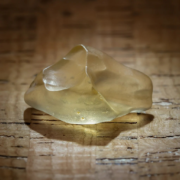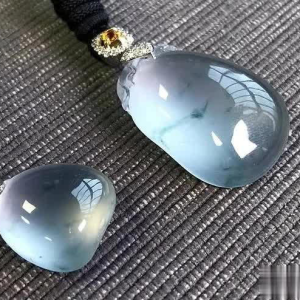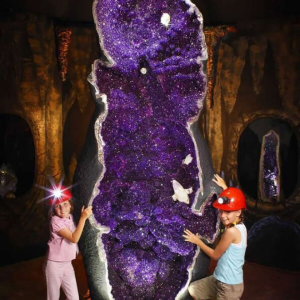Libyan Desert Glass formation, uses
Formation of Libyan Desert Glass:
The exact formation of Libyan Desert Glass is still debated, but the most widely accepted theory involves the following:
- Meteorite Impact or Airburst Event:
- Meteorite Impact: One hypothesis suggests that a meteorite impact caused intense heat and pressure in the region, which melted the surrounding sand and transformed it into glass. The energy from the impact would have been enough to turn the silica (sand) into a high-temperature glass state.
- Airburst Explosion: Another theory suggests an airburst event, where a meteorite exploded in the Earth’s atmosphere before hitting the ground, causing a huge release of energy. This would also have generated the extreme heat required to melt the sand, resulting in the formation of the glass.
- Temperature and Duration of the Event:
- The temperatures required for the formation of Libyan Desert Glass likely exceeded 1,500°C (2,732°F), which is far beyond the temperature of typical volcanic events.
- After the glass cooled, it solidified into smooth, translucent masses, often with a greenish-yellow or golden hue.
- Geological Evidence:
- Libyan Desert Glass is found in an area known as the “Great Sand Sea” in Egypt, a region where sand dunes dominate the landscape. This provides evidence that the glass is related to ancient geologic events that shaped the desert.
Uses of Libyan Desert Glass:
- Jewelry:
- Libyan Desert Glass is highly prized for its striking color and translucent nature, making it popular in jewelry. It is often shaped into cabochons (a smooth, rounded form) or used in its natural teardrop-shaped form.
- Some collectors and jewelers consider it a unique and rare material, especially due to the difficulty in sourcing it. Because of its rarity, it is often used as a decorative gemstone in high-end pieces.
- Metaphysical and Healing Properties:
- Many people believe that Libyan Desert Glass has spiritual significance, with claims that it can aid in mental clarity, transformation, and emotional healing. It is considered a stone of manifestation, helping users achieve their goals and dreams.
- Some crystal healers associate it with the solar plexus chakra, which is believed to govern personal power, confidence, and self-control. It is said to bring a sense of calm and clarity during meditation.
- Archaeological Significance:
- Some scholars believe that ancient civilizations may have used Libyan Desert Glass for creating tools or ornaments. In particular, small fragments of the glass have been found in Egyptian tombs, and there’s speculation that it may have been used as an exotic material in rituals or as a luxury item.
- In 2007, researchers found that fragments of Libyan Desert Glass had been shaped into tools by ancient humans, indicating that its high temperature and glassy texture may have made it useful for cutting or other applications.
- Scientific Study:
- Scientists study Libyan Desert Glass to learn more about high-energy impacts and the processes involved in creating natural glass. Researchers also use it to understand the Earth’s ancient history, especially its interactions with extraterrestrial objects like meteorites.
- The unique chemical composition of Libyan Desert Glass, which includes high levels of silicon dioxide, is of interest in materials science because it can provide insight into the properties of other natural and synthetic glasses.
- Symbolic Value:
- Libyan Desert Glass has also found its way into symbolic and artistic contexts. For example, it has been incorporated into modern art pieces or given as a gift to symbolize resilience, transformation, or a connection to the Earth and the cosmos.
Geological Specifics:
- Composition: Libyan Desert Glass is composed mainly of silicon dioxide (SiO₂), with traces of aluminum, calcium, and iron. The specific mix of elements makes it a type of tektite, a natural glass formed from terrestrial impacts or high-velocity collisions.
- Color Variations: The color of Libyan Desert Glass can range from clear to pale yellow, green, or golden hues. These colors are believed to be caused by small amounts of iron or other impurities in the glass. The most prized pieces are often transparent with a soft, pale yellow color.
- Shape and Size: The pieces typically occur in irregular, rounded shapes, but some can be elongated or have a teardrop form. The largest pieces of Libyan Desert Glass can be as large as 3 kilograms (about 6.6 pounds), though most are much smaller.
Conclusion:
Libyan Desert Glass is not just a geological curiosity but also a material with historical, cultural, and spiritual significance. Whether used in jewelry, studied for its unique formation process, or valued for its metaphysical properties, it stands as a remarkable testament to the Earth’s ancient and sometimes extraterrestrial past. Would you like to dive deeper into any specific aspect of its history or formation?



Leave a Reply
Want to join the discussion?Feel free to contribute!